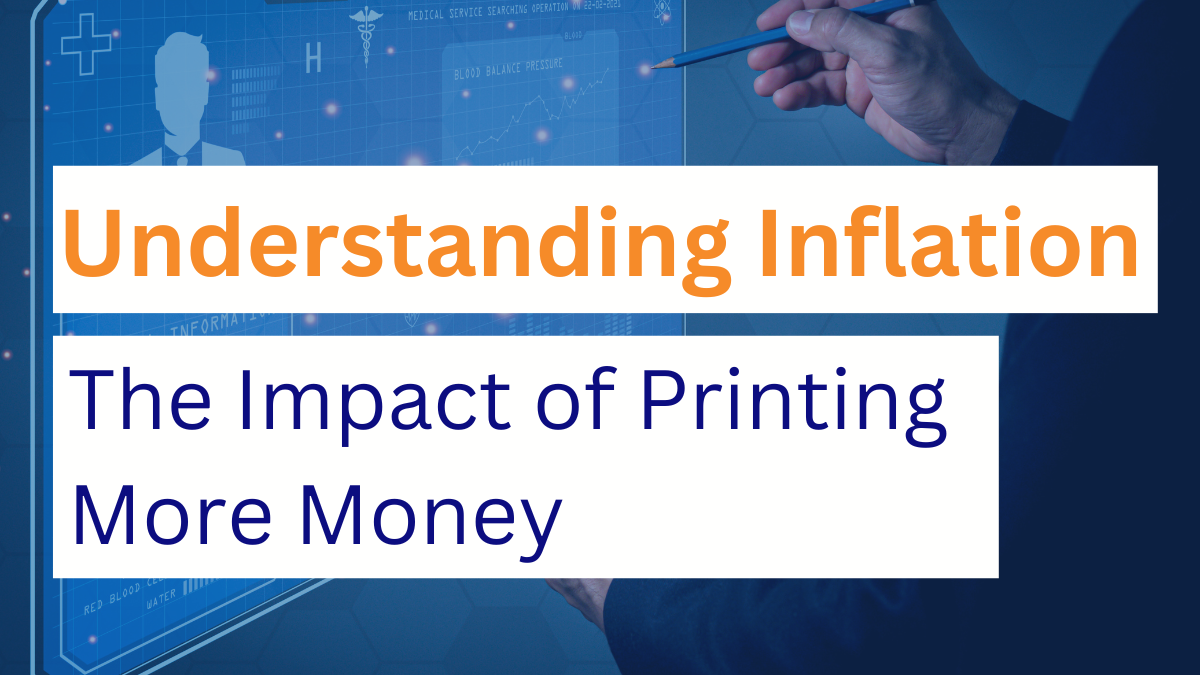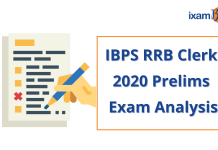According to the IMF’s (International Monetary Fund) World Economic Outlook Update of January 2023, the global inflation rate is decreasing from 8.8 percent in 2022 to 6.6 percent in 2023. However, during the pre-pandemic scenario between 2017 and 2019, this rate was 3.5 percent.
You must be hearing every now and then about how inflation is affecting the complete market globally. The use of this term has risen ever since the COVID-19 pandemic hit the world in 2020.
During inflation, there is a scarcity of supply in comparison with the demand for a commodity.
In simple language, if we try to understand inflation, the direct impact that it has on a country’s citizens is that it lowers the value of money and, consequently, the purchasing power of people. In other words, during inflation, the value of money decreases, and the prices of commodities increase. This leads to the lowering of the purchasing power through the currency.
The former Prime Minister of the United Kingdom, Margaret Thatcher, quoted inflation in the following way: “Inflation is the parent of unemployment and the unseen robber of those who have saved.”
This means that to fight inflation; there is a need to increase the supply of commodities that will balance out the surging demand. Now, the question we all have is, if the flow of money can fight inflation, then why not have the central bank print more money and supply it in the market?
But the truth is, this practice can worsen the inflation. Yes, you read that right. Printing more money is not the solution to fight inflation. In this blog, we will talk about some causes of why and how printing more money can cause inflation. We recommend you read this blog till the end to get some insightful information about the link between inflation and the printing of money. Lets start by understanding inflation.

What is Inflation?
Inflation directly affects the market and so to your pockets. The money value gets decreased and the commodity prices get increased. This means that the prices of things you buy go up over time. For example, in the early 2000s, for INR 500 you could get a bag full of groceries from the market but now, INR 500 is just not enough for you. This is the decrease in the value of money that means inflation. So, even though you have the same amount of money, you can’t buy as many things with it. This can happen because the cost of making things, like the cultivation of crops, goes up or because there’s more money in the economy. We often see inflation affecting the prices of everyday items like groceries, clothes, and fuel. When inflation goes up too much, it can make it harder for people to afford the things they need.
Talking about the central bank’s role in such circumstances is that it keeps an eye on inflation because it affects everyone’s purchasing power. If prices rise too quickly, people may struggle to afford basic necessities.
The Link between Inflation and Money
Remember we talked at the beginning of this blog about a question we all have about fighting inflation? It’s time to answer that.
Let us understand the link between inflation and money in simple words: when more money is circulating in the economy, it can lead to inflation. Now why does this happen? This happens because when there’s more money available, people can spend more, which can drive up demand for goods and services. When demand increases faster than supply, prices tend to go up, causing inflation because rare is precious.
For instance, the government prints a lot of money and puts it into circulation. People suddenly have more money in their pockets. This is exactly the ideology we all have had about money since generations “Paisa to Hathon ka Mael Hai” (Money is the dirt of Hands) it is meant to be pulled off. As a result, they start buying more things like groceries, clothes, and electronics. However, if the supply of these goods doesn’t increase at the same rate, their prices will go up because of increased demand. This is how an increase in the money supply can lead to inflation in the Indian economy.
Now you will ask, how does the RBI or any central bank control the money supply in the market? Let us take you through that.
How is Money Circulation Controlled by the Central Bank?
Central banks control the money supply by using various tools to influence how much money is circulating in the economy. One common tool is adjusting interest rates. When central banks lower interest rates, borrowing becomes cheaper, encouraging people and businesses to borrow and spend more. This increases the money supply. Conversely, when central banks raise interest rates, borrowing becomes more expensive, which can reduce spending and decrease the money supply.
For example, the general interest rate for any loan from any bank in India is 12% per annum. Now if someone offers it to you at 8% per annum, you are going to take the loan of more amount (that’s how we humans function). We tend to take more if we have to pay less. But this is not beneficial in the long term. Now let’s turn the table, the same bank starts offering you loans at 14% per annum. Are you going to take that? Of course not. The fluctuation in the rate of interest is decided by the RBI. This is how central banks control money in the market.
Now you wonder, how RBI does that? We got the answer.
The Reserve Bank of India (RBI) controls the money supply through its monetary policy decisions. For example, if RBI wants to increase the money supply to stimulate economic growth, it may lower interest rates. This encourages banks to lend more money, leading to increased spending and investment in the economy. On the other hand, if RBI wants to reduce inflation, it may raise interest rates to make borrowing more expensive, thereby slowing down spending and reducing the money supply.
To get better clarity about the Money supply, let’s understand the various components of it.
Introduction to Money Supply and Its Components
Money supply refers to the total amount of money available in the economy. It includes all forms of money that people use to make transactions, such as coins, paper currency, and bank deposits. There are different components or categories of money supply, which are often referred to as M0, M1, M2, and so on, based on their liquidity and accessibility.
M0:
This comprises a completely liquid form of physical currency like coins and notes issued by the central bank.
M1:
M1 includes M0 plus demand deposits, which are funds held in checking accounts that can be easily accessed and used for transactions. These deposits are typically held in commercial banks.
M2:
M2 encompasses M1 plus time deposits, which are funds held in savings accounts and fixed deposits in banks. These accounts may have restrictions on withdrawal and typically offer interest on deposits.
Now you must be wondering, how inflation arises at first. What worsens it and what causes it? Let’s delve into these aspects now.
What causes Inflation?
Inflation is not solely caused by the money supply in the market but also through various other factors nobody can predict. There are always two factors that causes inflation, Internal and External.
Internal causes of Inflation
Inflation happens when the prices of goods and services go up over time. There are a few reasons why this can occur. One common cause is when there’s too much money floating around in the economy. This can happen if a country’s central bank prints too much money or if people have more money to spend because of things like wage increases or government stimulus programs. When there’s more money available, people can bid up the prices of goods and services, leading to inflation.
Another cause of inflation is when the cost of producing goods and services goes up. For example, if the price of oil rises, it can make transportation and manufacturing more expensive, causing businesses to pass those costs on to consumers in the form of higher prices.
Now, let’s look at an example of a country experiencing severe inflation recently: Venezuela. Remember in 2016, various footage of people buying simple bread for a wad of currency went viral? In Venezuela, inflation skyrocketed due to a combination of factors, including excessive money printing, economic mismanagement, and political instability. The money value decreased to the extent that migrants started making artwork from the bank notes and started selling them internationally. This started happening in 2014, when to fight inflation, the government printed large amounts of money to finance its spending, leading to hyperinflation. As a result, prices soared, and people struggled to afford even basic necessities like food and medicine. This example highlights how a combination of factors can contribute to inflation, leading to significant economic challenges for individuals and the country as a whole.
External Causes of Inflation
However, there are many external factors that cause inflation like the Pandemic, Natural Disasters, Military War or Global Trade, etc.
Global Economy: Changes in global commodity prices, such as oil and food, can impact domestic inflation rates. For example, if oil prices rise globally, it can lead to higher transportation costs, which may increase the prices of goods and services domestically.
Exchange Rates: Fluctuations in exchange rates can affect the prices of imported goods. If the domestic currency depreciates, imported goods become more expensive, leading to inflation.
International Trade: Trade policies and agreements can impact inflation by affecting the prices of imported goods and competition in domestic markets.
Geopolitical Events: Political instability or conflicts in key regions can disrupt supply chains and affect commodity prices, leading to inflationary pressures.
Natural Disasters: Events like hurricanes, floods, or droughts can damage crops and infrastructure, leading to supply shortages and higher prices for affected goods.
War: During war, governments often increase spending on defense and military operations. This can lead to higher demand for goods and services, putting pressure on prices and causing inflation.
Let’s take a recent example of an External factor contributing to inflation,
The COVID-19 pandemic, who can forget that horrific era, when the world got paused. During that time, lockdowns and restrictions disrupted global supply chains, leading to shortages of goods such as electronics and household items, which increased demand for certain products like personal protective equipment (PPE) and medical supplies putting pressure on prices. These supply shortages, coupled with higher production costs due to safety measures and reduced workforce capacity, contributed to inflationary pressures in many countries, including India. As a result, prices for essential goods and services rose, impacting consumers’ purchasing power and contributing to overall inflation.
In a nutshell: Money Circulation, Inflation, and Money Components
Changes in the money supply can impact inflation, interest rates, and overall economic activity. For example, if the RBI decides to increase the money supply by injecting more cash into the economy, it can lead to higher inflation as more money chases the same amount of goods and services. On the other hand, reducing the money supply can help control inflation but may also slow down economic growth.
We are sure that by now, you have understood the link between money and inflation and some major aspects that help or cause inflation pressure. It is time to bust some myths that you might still have related to money printing and inflation.
Busting Myths about Money Printing and Inflation
Busting myths about money printing and inflation is essential in order to understand how economies work. Here are some common myths and the truth behind them:
| Myths | Facts |
| Printing more money always leads to inflation. | While printing too much money can contribute to inflation, it’s not the only factor. Inflation depends on various factors like demand for goods, productivity, and economic policies. |
| Inflation is always caused by the government printing money. | Inflation can be caused by factors other than money printing, such as supply shortages, rising costs of production, or changes in consumer demand. |
| Hyperinflation is inevitable if money printing continues unchecked. | While excessive money printing can lead to hyperinflation in extreme cases, it’s not inevitable. Responsible monetary and fiscal policies can help prevent hyperinflation and stabilize the economy. |
| Money printing is always bad for the economy. | Money printing can be necessary during economic crises to stimulate growth and prevent deflation. However, it must be done cautiously and accompanied by measures to control inflation and maintain economic stability. |
Conclusion
We are sure that now you have cleared all your doubts about Inflation and Money printing in the above 1960 words. In a nutshell, printing more money can never be an option to solve economic inflation. All countries have their own monetary and fiscal policies to deal with such situations. All we have to do is be smart enough when it comes to spending or investing money during such circumstances. However, we can also say that inflation does not always occur because of internal factors, sometimes, it can also occur because of some external factors, which we have discussed in this blog. We hope that this blog has helped you understand the topic quite well. We will keep on bringing such interesting topics to throw light at just for you to make your learning process easy and fun.
Get Free Online Test Series, GK updates in form of Beepedia, BeeBooster, as well as latest updates for Bank PO, Bank Clerk, SSC, RBI, NABARD and Other Government Jobs.















